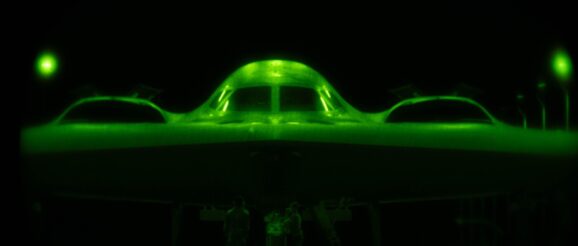Why America’s giant bunker-busting bombs may have failed to reach their target

The infographics were everywhere in the run-up to Sunday’s early-morning strike on Iran’s nuclear facilities by American stealth bombers.
They depicted America’s bunker-busting bomb, known as the Massive Ordnance Penetrator or GBU-57. It was being dropped from high above the Earth by a B-2 Spirit bomber. Then, the graphics showed it plowing a narrow channel deep beneath the ground — around 60 meters, or 200 feet — and erupting in an illustrated explosion.
Only America had this 30,000-pound weapon. Only America could hit Iran’s most deeply buried uranium enrichment site at a place called Fordo. It was buried beneath nearly 90 meters (around 300 feet) of rock, far deeper than Israeli bombs could penetrate.
There was only one problem — I wasn’t entirely sure it would work.

The White House disputes that claim.
Well … not necessarily.
Decades ago, I covered another effort to create a powerful Earth-penetrating weapon. In the aftermath of September 11, with an eye towards the caves of Afghanistan, where Osama Bin Laden was believed to be hiding, then-President George W. Bush’s administration looked at whether a nuclear weapon could be dropped from a plane into the ground. The Robust Nuclear Earth Penetrator, as the concept was known, would deliver a powerful shock to underground tunnels and bunkers.

But when scientists got involved, they found there was no way to get a nuclear weapon nearly deep enough to contain the blast and radioactive fallout, and the program was eventually abandoned.
I went back to take a look at the math from those early studies, and I found it actually was fairly straightforward. The so-called “penetration equations” have existed since the 1960s and depend on a limited number of factors including the shape of the nosecone, the weight and diameter of the weapon, the speed at which it hits the ground, and — crucially — the type of earth it gets dropped on.
“It depends enormously on the kind of rock,” says Raymond Jeanloz, a professor at the University of California at Berkley and one of the original authors of the 2005 National Academies Study on earth penetrators.
When I ran the calculations, using a key equation from that study, I found out that the GBU-57 could go up to 80 meters (262 feet) underground if it was dropped in silty clay.
In medium-strength rock, things looked far different. The GBU-57 could only go around 7.9 meters (about 25 feet) beneath the earth — far short of the 60 meters claimed by the infographics.
AND MATH!
Plug it all in, with the coefficient for “Medium-strength rock” and you get a penetration depth of 7.9 m (25 ft).
That is WELL short of the 60 m claimed and the 80-90m depth of Fordow. pic.twitter.com/Ak8lWGfKWk
— Geoff Brumfiel (@gbrumfiel) June 17, 2025
This may be an important part of the reason the weapon failed to destroy its target — if indeed the bombs did fail as the DIA assessment claims.
Jeanloz says that it’s not just the strength of the rock. Changes in the geologic structure can also cause the bomb to change direction even as it moves through the Earth.
“If there’s any variations … including fractures or gaps, that can deflect the trajectory into the ground,” he says. Those same variations can disperse any blast from the bomb.
It’s clear that American planners were aware of these kinds of challenges. Rather than dispatching one or two GBU-57s, they sent 12 to drop on Fordo. Based on satellite imagery, it looks like they may have been dropped in pairs, with the first weapon fracturing the rock to increase the penetrating depth of the second. The bombers also appeared to target Fordo’s ventilation system, a possible weak point.
The weapons likely created a powerful shockwave in the rock that would have travelled deep underground, rattling the facility below.
But Jeanloz says that those shockwaves weaken quickly as they move into the rock. Fordo’s position directly under the ridge of the mountain probably maximized that protection.
Geology, it turns out, may have foiled one of the most audacious American air operations in recent memory.
